Last week, Nancy and I were traveling for her work, and we had the opportunity to spend a day and a half in New York City. We had dinners with our older daughter, we attended some university functions, Nancy had finance meetings, and I had part of a day to myself.
As I have mentioned here recently, I am trying to figure out where to go with my writing. (And allow me to take this opportunity to thank those of you who weighed in with opinions about what project I should take on next. Many of you want to see continuations of existing series — Thieftaker was the most popular request, followed by Fearsson and Radiants. Not surprisingly, the new project I mentioned as a possible choice received little love. The unknown is bound to attract less notice. But the most heartening element of the responses I received was the repeated assurance that you would welcome and read whatever I choose to tackle going forward. And for that, I am grateful beyond words.)
As I continue to grapple with this decision, I thought I might find inspiration in art, and so, on a bright, crisp Monday morning in New York City, I walked north along Fifth Avenue to 83rd Street and the grand entrance to the Metropolitan Museum of Art. I didn’t know precisely what I sought in the museum, but I trusted the instinct that drove me there. Much the way our bodies sometime crave certain types of food — salty snacks, or protein rich foods — so I believe our brains can crave input of a specific type. I felt a strong need to look at the beauty of creative endeavor.
Specifically, I wanted to see the work of the Impressionists and Post-Impressionists. Degas, Manet, Morisot, Cezanne, Pissarro, Cassatt, Van Gogh, Gauguin, and my favorite, Claude Monet. As a historian (and a camera bug), I find the development of Impressionism (in the latter third of the nineteenth century) fascinating. It coincided with the invention and popularization of photography. Suddenly, artists were freed from the need to create images that were accurate and lifelike. A photograph could do that. Instead, artists could begin to experiment with color, with light and shadow, with texture, with the self-conscious use of brushstroke and palette knife.
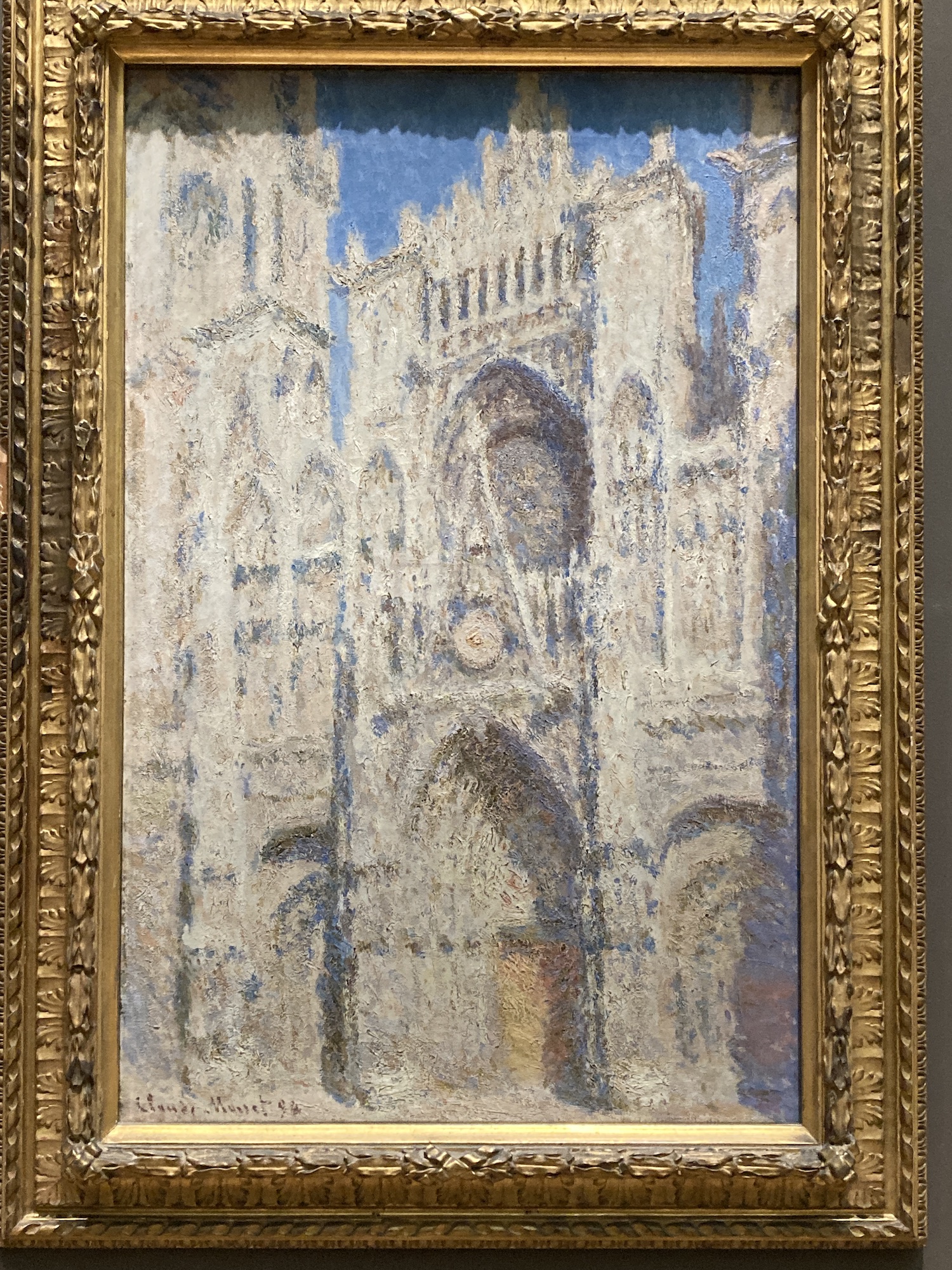
Monet was fascinated in particular with the way light and color changed from hour to hour, day to day, season to season. He painted series after series, experimenting with images of the same subject matter painted at dawn and dusk and midday. Haystacks on farms, poplar trees in the French countryside, water lilies, the Houses of Parliament and Charing Cross Bridge in London, and two of my favorite series: the façade of the Cathedral at Rouen, and the Japanese footbridge and pond at his home in Giverny.

Seeing these paintings last week filled me with joy, with a sense of calm and contentment. It was glorious. I lingered in the museum for hours longer than I had intended to.
But what does this have to do with writing? Why would it warrant discussion in a Professional Wednesday post?
Honestly, I am still trying to figure out the answers to those questions. But I think it comes down to this: Creativity demands that we reexamine those things we have taken for granted, the things we have accepted as routine. The daily dance of light across the front to a building, the shape and forms we see each day. But creativity also asks that, on occasion, we rethink everything about our art. Imagine having been trained as a classical artist in the mid-nineteenth century, only to have every assumption about visual art overturned by the invention of a light-capturing box.
In the course of my lifetime (and I’m not THAT old . . .), we have sent spacecraft beyond the pull of earth’s gravity and out to the edges of our solar system. We have created lenses capable of peering through space and time to the very beginnings of our universe. We have replaced the rotary phones that were wired into our homes with untethered devices that take pictures, monitor our finances, store our music, and handle computational tasks that used to challenge machines so big they needed to be housed in warehouse-sized spaces.
We have seen the impossible become consumer-ready, the fantastical turned mundane. And as storytellers, we have had to stretch to come up with ideas that will surprise and captivate and satisfy. That stretch doesn’t necessarily imply pursuit of the increasingly outlandish. Rather, I would argue, it has forced us to reconsider simplicity, to infuse the familiar with qualities that make us marvel or recoil.
And as I search for my next spark of inspiration, I find myself wondering what will be for me the literary equivalent of watching color and shadow transform a garden pond and the reflections of a footbridge. Once upon a time, I worried that I would run out of ideas for stories, that I would complete a series, only to discover that it was the last one, that my creative well had run dry. Now, as I approach the big Six-Oh, my fear is that I will run out of time before I have completed all the tales I wish to write. I’m don’t worry about failing to find a new idea; I worry about choosing the wrong one and wasting time on something I don’t love.
Late in his life, Monet began to lose his sight. And still he worked, learning to create images of power and beauty and drama despite seeing color and form with less clarity. Creativity finds a way. Inspiration carries us past obstacles both physical and emotional.
Maybe, ultimately, that was the reminder I needed when I stepped into the Met. I still don’t know what I’ll be writing next. I do know that the challenges in my life have not gone away and won’t anytime soon. But I am a creator, and I still crave inspiration. So, I will consider, and I will settle on a project, and I will share with you the stories that stir my passions.
And I wish you the same.
Keep writing, keep creating.









 One idea is to write my next Thieftaker novel, either in the form of a trio of novellas, like I did with
One idea is to write my next Thieftaker novel, either in the form of a trio of novellas, like I did with 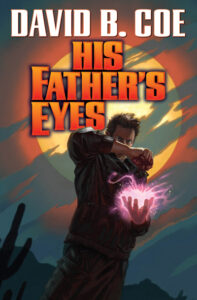
 I want to write at least one more
I want to write at least one more  I would love to be a bestselling author. And with each new project I take on, I wonder if this might finally be the literary vehicle that gets me there. Thieftaker, Fearsson, the time travel books, the Radiants franchise. I had high hopes for all of them. All of them were critical successes. None of them has taken me to that next level commercially. So does that mean I should give up?
I would love to be a bestselling author. And with each new project I take on, I wonder if this might finally be the literary vehicle that gets me there. Thieftaker, Fearsson, the time travel books, the Radiants franchise. I had high hopes for all of them. All of them were critical successes. None of them has taken me to that next level commercially. So does that mean I should give up? Why do I do this? Why am I suggesting you do it, too? Because while we are telling stories, our books are about more than plot, more than action and intrigue and suspense. Our books are about people. Not humans, necessarily, but people certainly. If we do our jobs as writers, our readers will be absorbed by our narratives, but more importantly, they will become attached to our characters. And they will want to see more than just the big moment when those characters prevail (or not). They will want to see a bit of what comes after.
Why do I do this? Why am I suggesting you do it, too? Because while we are telling stories, our books are about more than plot, more than action and intrigue and suspense. Our books are about people. Not humans, necessarily, but people certainly. If we do our jobs as writers, our readers will be absorbed by our narratives, but more importantly, they will become attached to our characters. And they will want to see more than just the big moment when those characters prevail (or not). They will want to see a bit of what comes after. For the Thieftaker novels, Tor hired the incomparable
For the Thieftaker novels, Tor hired the incomparable 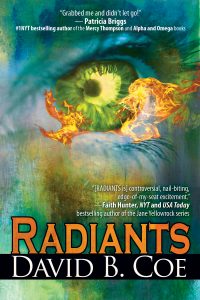 And that’s what we want. Sure, part of what makes that Invasives cover work is the simple fact that it’s stunning. The eye, the flames, the lighting in the tunnel. It’s a terrific image. But it also tells you there is a supernatural story within. And while the tunnel “setting” is unusual, the presence of train tracks, wires, electric wiring, and even that loudspeaker in the upper left quadrant of the tunnel, combine to tell you the story takes place in our world (or something very much like it). And for those who have seen the cover of the first book in the series, Radiants, the eye and flames mark this new book as part of the same franchise. That’s effective packaging.
And that’s what we want. Sure, part of what makes that Invasives cover work is the simple fact that it’s stunning. The eye, the flames, the lighting in the tunnel. It’s a terrific image. But it also tells you there is a supernatural story within. And while the tunnel “setting” is unusual, the presence of train tracks, wires, electric wiring, and even that loudspeaker in the upper left quadrant of the tunnel, combine to tell you the story takes place in our world (or something very much like it). And for those who have seen the cover of the first book in the series, Radiants, the eye and flames mark this new book as part of the same franchise. That’s effective packaging. I discussed the Thieftaker books in last week’s post, and I mentioned how my love of U.S. history steered me toward setting the series in pre-Revolutionary Boston. But I failed to mention then that upon deciding to set the books in 1760s Boston, I then had to dive into literally months of research. Sure, I had read colonial era history for my Ph.D. exams, but I had never looked at the period the way I would need to in order to use it as a setting for a novel, much less several novels and more than a dozen pieces of short fiction. Ironically, as a fiction author I needed far more basic factual information about the city, about the time period, about the historical figures who would appear in my narratives, than I ever did as a doctoral candidate.
I discussed the Thieftaker books in last week’s post, and I mentioned how my love of U.S. history steered me toward setting the series in pre-Revolutionary Boston. But I failed to mention then that upon deciding to set the books in 1760s Boston, I then had to dive into literally months of research. Sure, I had read colonial era history for my Ph.D. exams, but I had never looked at the period the way I would need to in order to use it as a setting for a novel, much less several novels and more than a dozen pieces of short fiction. Ironically, as a fiction author I needed far more basic factual information about the city, about the time period, about the historical figures who would appear in my narratives, than I ever did as a doctoral candidate. The same is true of the worlds I build from scratch for my novels. My most recent foray into wholesale world building was the prep work I did for my Islevale Cycle, the time travel/epic fantasy books I wrote a few years ago. As with my Thieftaker research, my world building for the Islevale trilogy consumed months. I began (as I do with my research) with a series of questions about the world, things I knew I had to work out before I could write the books. How did the various magicks work? What were the relationships among the various island nations? Where did my characters fit into these dynamics? Etc.
The same is true of the worlds I build from scratch for my novels. My most recent foray into wholesale world building was the prep work I did for my Islevale Cycle, the time travel/epic fantasy books I wrote a few years ago. As with my Thieftaker research, my world building for the Islevale trilogy consumed months. I began (as I do with my research) with a series of questions about the world, things I knew I had to work out before I could write the books. How did the various magicks work? What were the relationships among the various island nations? Where did my characters fit into these dynamics? Etc. As many of you know, my first series, the LonTobyn Chronicle, had as its narrative core, a magic system in which mages formed psychic, magical bonds with birds of prey: hawks, owls, eagles. To this day, fans of the series mention those relationships between mages and their avian familiars, as the element of the books they enjoyed most.
As many of you know, my first series, the LonTobyn Chronicle, had as its narrative core, a magic system in which mages formed psychic, magical bonds with birds of prey: hawks, owls, eagles. To this day, fans of the series mention those relationships between mages and their avian familiars, as the element of the books they enjoyed most.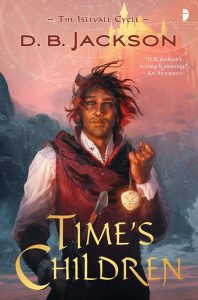 The thing is, we writers do and must “write what we know.” But we understand that “what we know” does not equal “what we have lived.” Writing is all about emotion, about delving into the thoughts and feelings and visceral reactions of our point of view characters. I may not have ever traveled through time (for example), or investigated a murder in pre-Revolutionary Boston, or discovered that I possess supernatural powers and then been pursued by rogue government agents intent on killing my family and making me their weapon. (If you haven’t read Radiants, it’s really time you did.) But even if I haven’t done those things, I have lived the gamut of emotions my characters experience. I have known fear. I have been in love. I adore my children and have been frightened for them. I have been enraged. I have experienced physical pain and illness, exhaustion and hunger, desire and pleasure. I have known joy and confusion and shock, the thrill of ambition realized and the bitter disappointment of expectation thwarted. I can go on, but I think you get my point.
The thing is, we writers do and must “write what we know.” But we understand that “what we know” does not equal “what we have lived.” Writing is all about emotion, about delving into the thoughts and feelings and visceral reactions of our point of view characters. I may not have ever traveled through time (for example), or investigated a murder in pre-Revolutionary Boston, or discovered that I possess supernatural powers and then been pursued by rogue government agents intent on killing my family and making me their weapon. (If you haven’t read Radiants, it’s really time you did.) But even if I haven’t done those things, I have lived the gamut of emotions my characters experience. I have known fear. I have been in love. I adore my children and have been frightened for them. I have been enraged. I have experienced physical pain and illness, exhaustion and hunger, desire and pleasure. I have known joy and confusion and shock, the thrill of ambition realized and the bitter disappointment of expectation thwarted. I can go on, but I think you get my point.
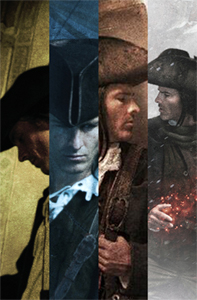 Then there are people like me. Some books, I outline in a good deal of detail. The Thieftaker novels demand preparation of this sort because I am tying together fictional and historical timelines, trying to make my story meld with established events. The Islevale books — time-travel epic fantasies — should have demanded similar planning. But for reasons I still have not fully grasped, all three books defied my efforts to outline. I simply couldn’t plot the books ahead of time. I tried for months (literally) to outline the first book, Time’s Children, and finally my wife said, “Maybe you just need to write it.”
Then there are people like me. Some books, I outline in a good deal of detail. The Thieftaker novels demand preparation of this sort because I am tying together fictional and historical timelines, trying to make my story meld with established events. The Islevale books — time-travel epic fantasies — should have demanded similar planning. But for reasons I still have not fully grasped, all three books defied my efforts to outline. I simply couldn’t plot the books ahead of time. I tried for months (literally) to outline the first book, Time’s Children, and finally my wife said, “Maybe you just need to write it.”  That’s what I did, and the result was a first draft that needed extensive reworking. When I began book II, Time’s Demon, I ran into the same problem. I didn’t even try to outline Time’s Assassin, the third and final volume. I knew it would be a waste of time. All three books needed extensive editing, more than I usually need to do. But they wound up being far and away the finest books I’ve written.
That’s what I did, and the result was a first draft that needed extensive reworking. When I began book II, Time’s Demon, I ran into the same problem. I didn’t even try to outline Time’s Assassin, the third and final volume. I knew it would be a waste of time. All three books needed extensive editing, more than I usually need to do. But they wound up being far and away the finest books I’ve written.